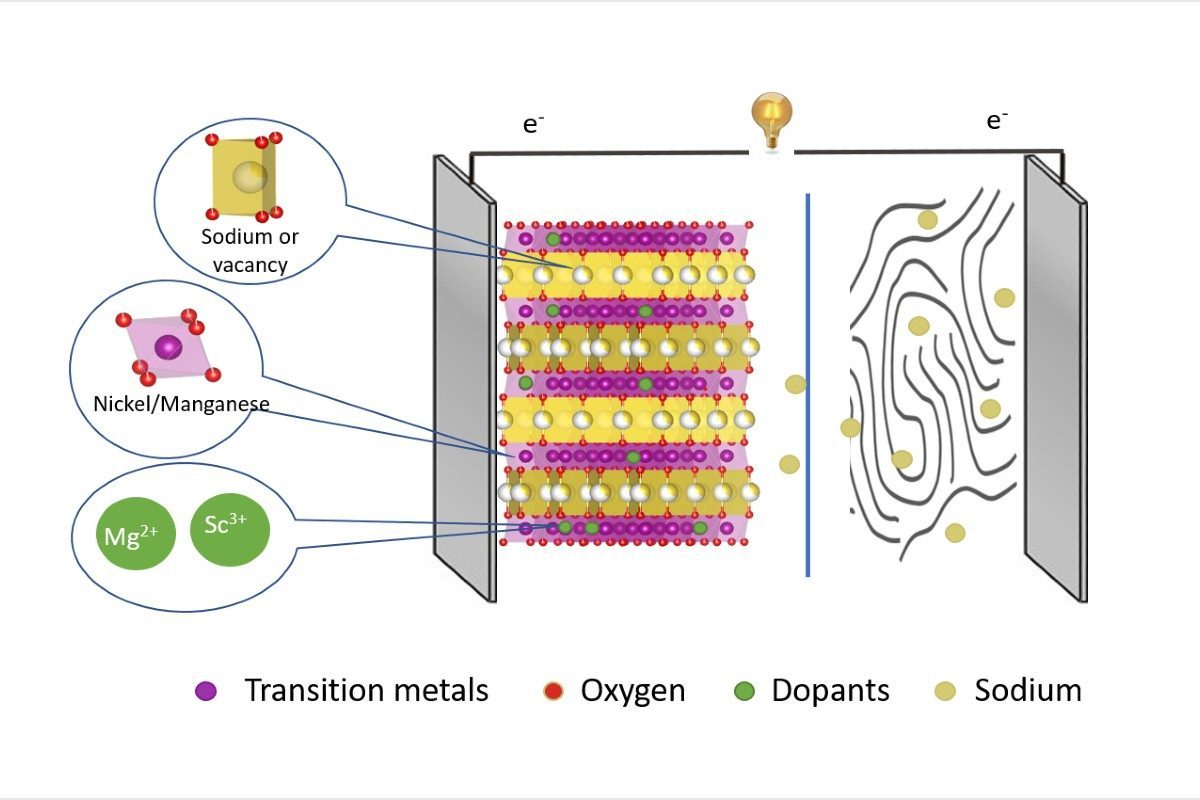Berlin research into the stability of sodium-ion batteries
Sodium-ion batteries still have a number of weak points, which researchers at the Helmholtz-Zentrum Berlin (HZB) and Humboldt-Universität zu Berlin believe could be remedied by optimising battery materials. One option is doping the cathode material with foreign elements – scandium and magnesium were specifically investigated in Berlin. The team of scientists discovered two competing mechanisms that determine the stability of the cathodes.
The starting point for the research was the realisation that cathode materials made of layered transition metal oxides with the elements nickel and manganese (NMO cathodes) are particularly promising for sodium-ion batteries. This is because they form host structures in which the sodium ions can be stored during discharge and released again during charging. “However, there is a risk of chemical reactions that initially improve the capacity, but then trigger local structural changes and thus degrade the cathode material,” according to an accompanying HZB press release.
This is where doping the cathode material with foreign elements comes into play. The researchers selected elements that have similar ionic radii to nickel (Ni2+) but a different valence state, such as magnesium (Mg2+) ions or scandium ions (Sc3+). “The results surprised us,” said Dr Katherine Mazzio, who works in the joint Operando Battery Analysis research group at HZB and Humboldt-Universität zu Berlin. Although doping with scandium led to fewer structural changes during the electrochemical cycle than doping with magnesium, it did not improve the stability. “Until now, it was thought that supressing phase transitions (and thus volume changes) would also improve the cathode material cycling performance over many cycles. But that’s not enough,” was the conclusion.
Doping with magnesium suppressed the oxygen redox reaction in NMO even more. According to the researchers, this was also unexpected, as magnesium is known to trigger an oxygen redox reaction in layered manganese oxides. “We analysed different Mg/Ni ratios in NMO and found that the oxygen redox reaction reaches a minimum at a ratio close to 1,” explains Mazzio. “Only through a combination of advanced X-ray techniques could we show that it is more than just suppression phase transitions that is important for improving the long-term cycling behavior, but also the interplay between Ni and O redox activity dictate performance.”





0 Comments